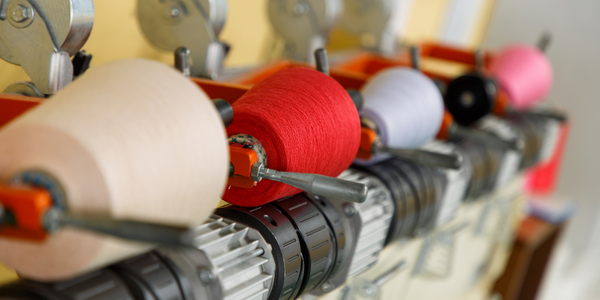Technology Category
- Platform as a Service (PaaS) - Application Development Platforms
Applicable Industries
- Apparel
- Cement
Use Cases
- Building Automation & Control
About The Customer
Off the Ramp is designed for anyone in the production industry. This includes creatives, crew, talent, and clients. The app is particularly beneficial for independent creatives, crew, and talent who are looking for work and opportunities to collaborate. It also serves clients and agencies who are in search of creatives, crew, and talent for their projects. The app is not limited to a specific geographical location and has users from different parts of the world. The founder plans to continue growing the app and expanding its features to reach more people in the production industry across different continents.
The Challenge
The production industry is a complex ecosystem of creatives, crew, talent, and clients. However, the industry lacked a platform that could enable these stakeholders to professionally connect, build relationships, and collaborate effectively. Independent creatives, crew, and talent often found it challenging to find work, manage themselves, and collaborate with each other. The industry needed a solution that could streamline these processes and make it easier for stakeholders to connect and collaborate. Kat Mofokeng, a producer and production manager for Mr. Price, identified this gap in the market and decided to create a solution.
The Solution
Kat Mofokeng developed Off the Ramp, a web app designed to address the challenges faced by the production industry. The app was built using Bubble, a no-code web app platform that offers all the necessary features to build a web app. Off the Ramp allows users to create a profile, update it, and manage themselves. It also features a Market page where clients and agencies can filter search for the creatives, crew, and talent they are looking for. The app also includes an office page where users can manage their Options, Castings, Fittings, Online Casting briefs, Virtual Castings, Collaboration Projects, and a Client User’s Bank of creatives, crew & talent for future productions. The app aims to aid independent creatives, crew, and talent find work, manage themselves, and collaborate with each other.
Operational Impact
Quantitative Benefit

Case Study missing?
Start adding your own!
Register with your work email and create a new case study profile for your business.
Related Case Studies.

Case Study
Fire Alarm System and Remote Monitoring Sytem
Fire alarm systems are essential in providing an early warning in the event of fire. They help to save lives and protect property whilst also fulfilling the needs of insurance companies and government departments.Fire alarm systems typically consist of several inter-linked components, such as smoke detectors, heat detector, carbon monoxide, manual call points, sounders, alarm and buzzer. The fire alarm system should give immediate information in order to prevent the fire spread and protect live and property.To get maximum protection a shoe manufacturer in Indonesia opted for a new fire alarm system to monitor 13 production sites spread over 160 hectars. Although the company had an existing fire alarm system, it could not be monitored remotely.It was essential that the new system would be able to be monitored from a central control room. It needed to be able to connect to the existing smoke detector and manual call point. Information should be easily collected and passed on to the Supervisory Control and Data Acquisition (SCADA) system. Furthermore, the system should have several features such as alarm management, auto reporting, being connected to many client computers without additional cost, and run 24/7 without fails. The company also needed a system which could be implemented without changing the architecture of the existing fire alarm system.

Case Study
IoT Applications and Upgrades in Textile Plant
At any given time, the textile company’s manufacturing facility has up to 2,000 textile carts in use. These carts are pushed from room to room, carrying materials or semi-finished products. Previously, a paper with a hand-written description was attached to each cart. This traditional method of processing made product tracking extremely difficult. Additionally, making sure that every cart of materials or semi-finished products went to its correct processing work station was also a problem. Therefore, the company desired an intelligent solution for tracking assets at their factories. They also wanted a solution that would help them collect process data so they could improve their manufacturing efficiency.

Case Study
System 800xA at Indian Cement Plants
Chettinad Cement recognized that further efficiencies could be achieved in its cement manufacturing process. It looked to investing in comprehensive operational and control technologies to manage and derive productivity and energy efficiency gains from the assets on Line 2, their second plant in India.

Case Study
Retailer Uses RFID Scanner to Improve Efficiency
Patrizia Pepe wished to improve the logistics of their warehouse: accepting incoming goods from their production sites, movement of items throughout
the warehouse, and packaging of goods for distribution to the retail locations. They initially tried to use barcodes for this function. Because barcodes must be individually scanned within a line-of-sight, the acceptance of goods coming into the warehouse was too time consuming. Working with the University of Florence, Patrizia Pepe instituted a five-month pilot project beginning in August of 2009 to test the validity of an RFID solution. The pilot involved tagging of about 60,000 items for the second seasonal collection, and convinced the company to move forward with tagging all items.

Case Study
Monitoring and Controlling Automatic Mixing and Dispensing Machines
As technology advances, textile manufacturing has been transformed from a labor-intensive to a partially or fully automated industry. Automation is significant in all segments of textile production - from spinning to printing, and textile machinery manufacturers are constantly searching for new technologies and automation processes will increase the productivity of their machines. The color paste mixing and dispensing machine is an essential part of the printing and dyeing process. With the advantage of automatically computerized controls and database management, the system can significantly improve its dispensing precision, working efficiency and production quality as well as reducing material consumption.








